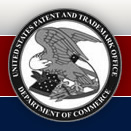Another weekend update breaks millions of static URLs.

I’m beginning to detect a pattern here. Over the weekend, the USPTO updated the format it uses for the Trademark Document Retrieval (TDR) system. TDR is used to view the details of a trademark application. So the bad news is that millions of static URLs were broken without public notice. The good news is that the new format is shorter and still static.
Here is the old static URL format for TDR:
Here is the new static URL format for TDR:
Where “78348706” is the serial number of the trademark application (in this case, the Clock Tower law Group trademark application).
Patent URLs were broken on 03/26/07 and remain broken (i.e. not static). I’m still waiting to hear back from the USPTO about that.

